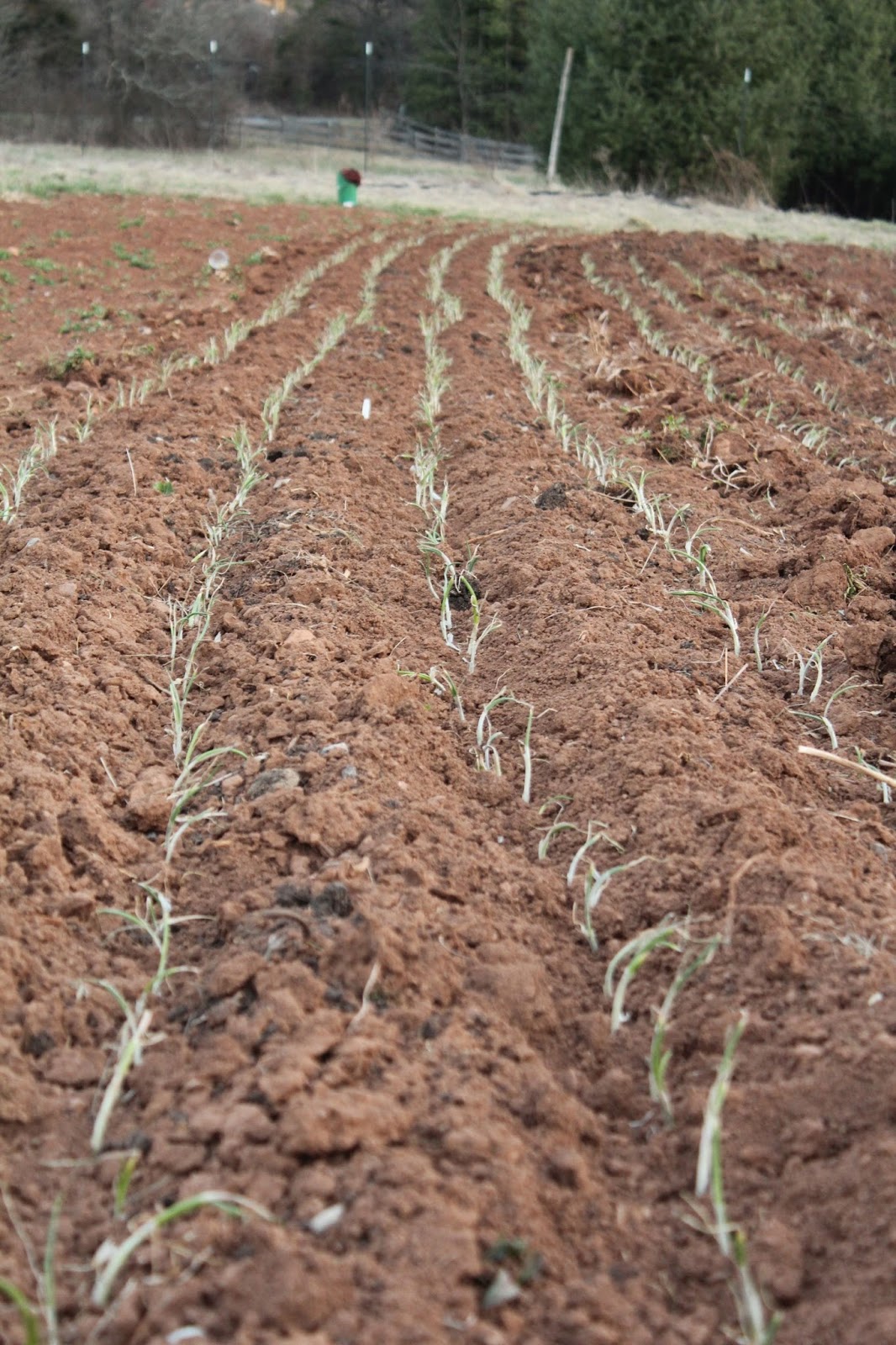Compost has micronutrients and microbial activity that cannot be found in synthetic fertilizers. Last year we applied compost at 10 tons to the acre. This year we will be scaling back to 5 tons to the acre. Other amendments are used based on crop requirements. For example, Kale and Cabbage appreciate a little more Boron, and some more nitrogen in the cooler spring soils. Organic sources of nitrogen commonly used are feather meal, or blood meal. Potatoes will enjoy a little more potassium. Extra sources of both potassium and phosphorus can be found in rock based powders (greensand, etc...).
One must be careful in the injudicious spreading of compost year after year though. Higher phosphorus levels can be manifest. This can make certain mycorrhizal activity go dormant, and trying to use compost to meet all of a crop's nitrogen needs can disturb the balance of your soil. Nitrogen can be accumulated by cover crops too! (clovers and other legumes, via symbiotic nitrogen fixation).
Much more on soil science to come! We are trying to learn more every day. We think this year is going to be a mind-opener for trying to grasp the significance of soil biology and trying to understand growing more nutritionally dense foods. Totally expecting some kind of paradigm shift. In future posts, we will share our experiments with the refractometer.
Today the weather was amazing, it got close to 80F here and was sunny with blue skies, but of course they are calling for some colder weather next week. Spring in the mountains is usually a roller coaster ride for sure. We planted somewhere around 2200+ onion plants today, the varieties were: Red Candy Apple, Candy, and Super Star. These are all "intermediate." Onions are sensitive to day length so it's important to raise varieties that are adapted to your latitude.
In addition to onion planting, I spent some time using the tractor to chisel plow some areas. (More about the alternative tillage techniques I've been experimenting with later.) Trying to avoid using a tiller when not necessary. Mainly using a disc and a tool bar set up with two chisel plow shanks (all our tractor can most likely pull.) Field cultivators can be added and subtracted from the tool bar quite easily.
This was an area that had gone to heavy weeds and other grasses by the end of last summer, and the chisel plows were pulling up pretty big clods. When used in clearer areas it more or less sailed through the soil in 2 Low mid RPM range, sunk to a depth of about 8 inches. The area chiseled for the potatoes looks much nicer.
Speaking of which, we should have our potato seed here soon. It would have been here by now, but transport out of Maine has been tricky lately it seems, due to weather.
What tomorrow is looking like: compost spreading.
In the not too distant future: seeding spinach, carrots, beets, turnips, lettuce mix.
- Blair



I'm glad your blogging Blair! I enjoy knowing what you're up to and have definitely picked up a few things to think about and try from things you've shared.
ReplyDeleteVery interesting. Thank you for sharing and for what you're doing. Keep up the good work - Abraham
ReplyDelete